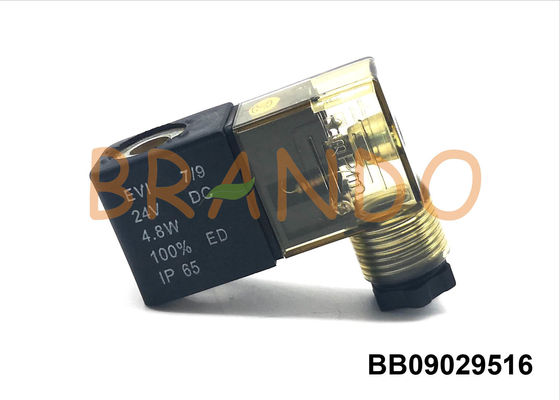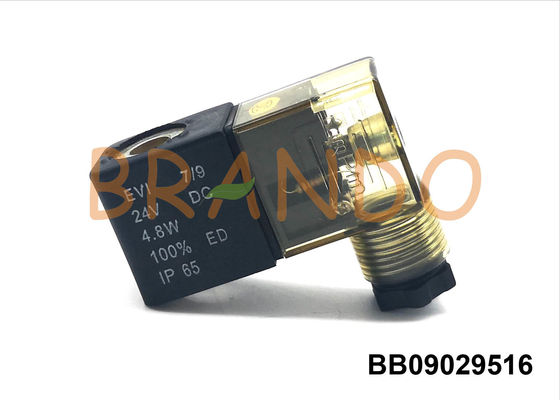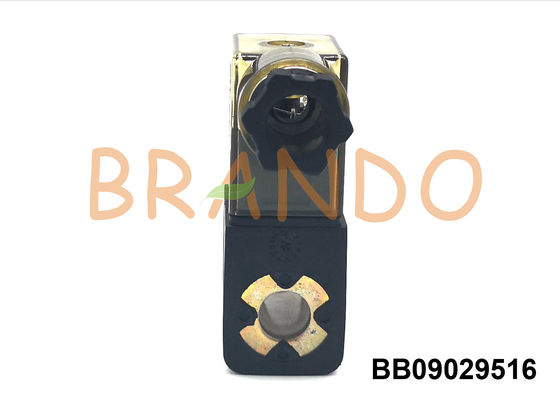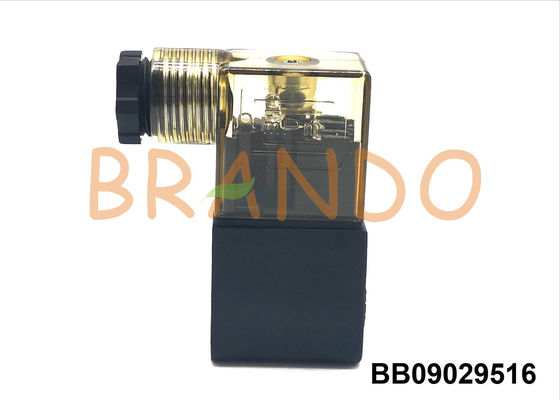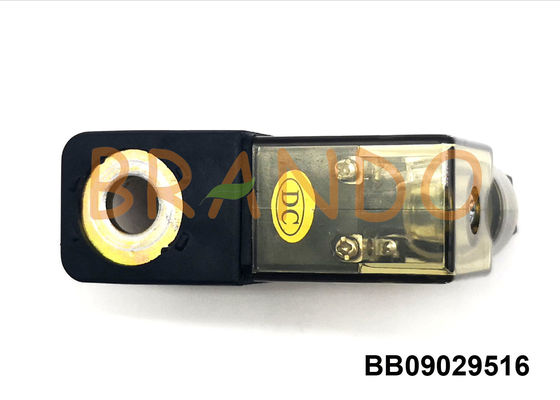AMISCO Type EVI 7/9 AMP 6.3x0.8 4V Series Pneumatic Solenoid Valve Coil 9 Diameter DC12V/24V
There is a movable iron core inside the AMISCO type EVI 7/9 solenoid valve coil. When the valve is energized, the iron core is attracted by the coil and then moved to drive the spool to move, thereby changing the conduction state of the valve. Dry or wet is just the working environment of the coil, and there is no difference in valve operation.
But we must know that the amount of inductance is completely different after the air-core coil is added to the core. The inductance of the former is much smaller than that of the latter.
When the coil is connected to alternating current, the impedance produced by the coil is naturally different. For the same coil, when the same frequency of alternating current is applied, the inductance will change with the position of the core, that is, the impedance changes with the position of the core. When the impedance is small, the current flowing through the coil will increase.
So how does the solenoid valve coil use the wire to make an effect? In fact, it is built by the presence of a magnetic field around the wire, and it is wound into a spiral-shaped reinforcing magnetic field to achieve the highest magnetic field strength with a minimum space.
Technical parameter of AMISCO type EVI 7/9 AMP 6.3x0.8 solenoid coil:
| Model number |
BB09029516 |
| Reference number |
EVI 7/9 AMP 6.3 x 0.8 |
| Normal voltage |
DC12V/DC24V/AC220V (Other color can be customized) |
| Normal power |
DC: 3-8W 6W AC: 4-8VA |
| Insulation class |
H, F |
| Connection type |
DIN43650B; 6.3mm x 0.8mm |
| Application |
4V series Pneumatic Solenoid Valve Coil Automatic Control |
| Weight |
71.5 g |
| Hole size |
9 mm |
| Height |
29.5 mm |
Main dimension of EVI 7/9 4V series pneumatic solenoid valve coils:

Deconstruction diagram of EVI 7/9 9 diameter electric magnetic coils:

Providing different junction boxes of EVI 7/9 electromagnetic coils:

Maintenance method of AMISCO Type EVI 7/9 6.3x0.8 Solenoid Valve Coil in pneumatic solenoid valve:
The application of the solenoid valve coil is very wide, and it has a great effect in the pneumatic solenoid valve. The pneumatic solenoid valve sometimes fails, which is due to a problem with the solenoid valve coil.
The failure of the pneumatic solenoid valve is: the valve can not be reversed or the reversing action is slow, the gas leaks, the electromagnetic pilot valve is faulty, and the like.
(1) Pneumatic solenoid valves cannot be reversed or the reversing action is slow, generally caused by poor lubrication, spring jamming or damage, oil stains or impurities jamming the sliding parts. In this regard, first check whether the oil mister is working properly; whether the viscosity of the lubricating oil is appropriate. If necessary, replace the lubricant, clean the sliding part of the pneumatic solenoid valve, or replace the spring and pneumatic solenoid valve.
(2) After long-term use, the pneumatic solenoid valve is prone to wear of the valve core seal, damage to the valve stem and the valve seat, resulting in gas leakage in the valve, slow valve operation or failure to normal commutation. In this case, replace the seal, stem and seat, or replace the pneumatic solenoid valve.
(3) If the inlet and exhaust holes of the electromagnetic pilot valve are blocked by oil and other debris, the sealing is not strict, the movable iron core is stuck, the circuit is faulty, etc., and the pneumatic solenoid valve cannot be normally reversed. For the first three cases, the sludge and impurities on the pilot valve and the moving iron core should be cleaned. Circuit faults are generally divided into two types: control circuit faults and solenoid valve coil faults. Before checking the circuit fault, first turn the manual knob of the pneumatic solenoid valve a few times to see if the pneumatic solenoid valve can normally reverse direction under the rated air pressure. If the normal commutation is possible, the circuit is faulty. During the inspection, the voltage of the solenoid valve coil can be measured by the meter to see if the rated voltage is reached. If the voltage is too low, the power supply in the control circuit and the associated stroke switch circuit should be further checked. If the pneumatic solenoid valve cannot be reversed normally at the rated voltage, check the connector (plug) of the solenoid for looseness or contact. The method is to unplug the plug and measure the resistance of the coil. If the resistance is too large or too small, the solenoid is damaged and should be replaced.
Welcome to your inquiry!

 Your message must be between 20-3,000 characters!
Your message must be between 20-3,000 characters! Please check your E-mail!
Please check your E-mail!  Your message must be between 20-3,000 characters!
Your message must be between 20-3,000 characters! Please check your E-mail!
Please check your E-mail! 


